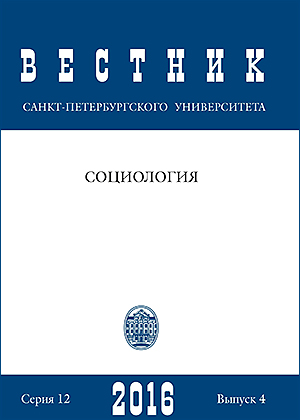Saint-Petersburg’s political online communities clusters In “VKontakte”
DOI:
https://doi.org/10.21638/11701/spbu12.2016.405Abstract
Social media creates the space for the development of online communities that are different in social setting and activities. Our ambition is to study the sociopolitical online communities of St. Petersburg. We try to explore how online communities structure the practices of political consumption, especially in the field of the online social network “VKontakte”. In this part of research, that can be described as the first step of the project, we focus on the mapping network of sociopolitical online communities of St. Petersburg. Our aim is to make a general picture of the sociopolitical online communities and to analyse its structure in terms of clustering. We examine 440 online communities collected via a sample extension algorithm. The methodological approach is based on mathematical graphing theory. The model is a set of communities and a set of audience adjacency. These intersections are regarded as the edge’s weights. In the second model ties are interpreted as the communication flow of reposts between communities. The edge’s weights are regarded as the edges merge with the same source and target node. It is interesting that the model of audience adjacency has the strong links. When reducing the weak edges we use the polarization simulation in echo chambers. In the model, we use the different types of affinity propagation in the Chinese Secret concept to divide the graph in more clusters: from 2 up to 15. Refs 38. Figs 4. Table 7.
Keywords:
big data, data mining, clustering, online communities, political communication, network analysis, audience adjacency, social media, social networks, echo chambers
Downloads
References
References
Downloads
Published
How to Cite
Issue
Section
License
Articles of "Vestnik of Saint Petersburg University. Sociology" are open access distributed under the terms of the License Agreement with Saint Petersburg State University, which permits to the authors unrestricted distribution and self-archiving free of charge.




